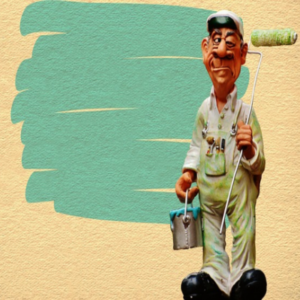Failure of House Paints from Moisture - Part 3: Solutions

We have reached part 3 of our 4-part series on failure of house paints from moisture. We are now ready to solve the problem and implement solutions. We will conclude with tips on repainting in the final blog.
Outside Water
- If outside water is getting in, the following steps will block its entry:
- Apply a water-repellent preservative to all joints before repainting. Repaint with a nonporous primer and top coat.
- Calk or putty open joints and cracks after treating with water-repellent preservatives and priming.
- Repair any and all roof leaks.
- Check eave troughs and downspouts for leaks, cleanliness, pitch, and capacity. Watching their performance during a heavy rain can be very revealing. Downspouts should empty into splash blocks to drain the water away from the building.
- Do not allow ice to form on roof edges and valleys. Removing the snow from the roof, increasing the insulation in the ceiling, and increasing ventilation in the attic will prevent ice dams.
- When re-roofing, lay a strip of rolled roofing under the new shingles along all horizontal roof edges. This will give further protection if ice dams form.
- Apply non porous primer to areas that have peeled down to the wood.
Inside Water Vapor
If the paint failure is caused by cold weather condensation, the following procedures will help.
Increase the resistance to penetration of vapor by painting the ceilings and the interior surfaces of the outside walls. If remodeling and including new paneling, a polyethylene film place over the surfaces to be covered will be effective.
If the paint is peeling on the gable ends, increase the insulation and ventilation in the attic. The total screened area for attic venting purposes should be approximately 1/225 of the ceiling area of the house. A minimum of 6 inches of dry insulation should be maintained on the attic floor.
Reduce the humidity. Shut off humidifiers and properly vent gas heaters, clothes dryers, and kitchen exhaust to the outside – not to an enclosed garage. A vapor barrier/ground cover in the crawl space will cut down on moisture entering the building from below.
Meet the Author
Dr. Todd Shupe is the President of Wood Science Consulting, LLC. He is a well-recognized expert on wood forensics, wood preservation, wood decay and degradation, and wood species identification. He has a broad background in new product development, quality management, and marketing and sales in both the public and private sectors. For more information please visit DrToddShupe.com.
We welcome your comments below.
Thank you for visiting. We trust that you have enjoyed reading our articles.
Liked this post? Read more below or search for more topics . . .

